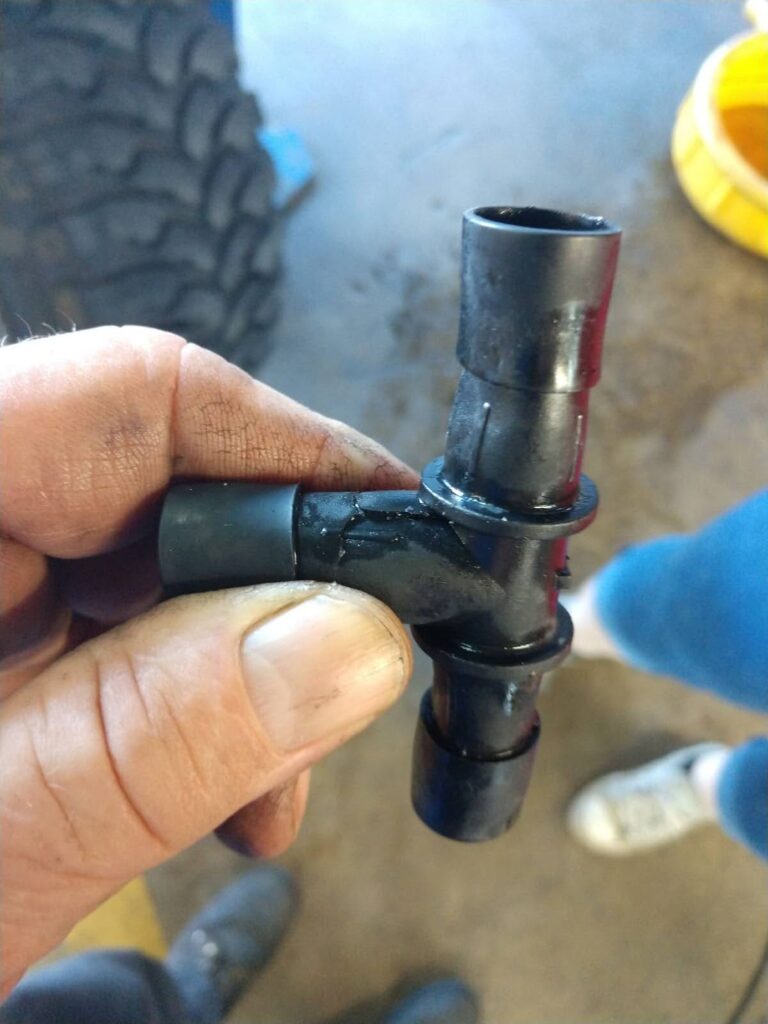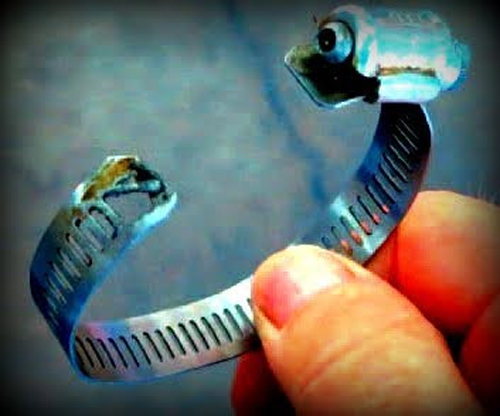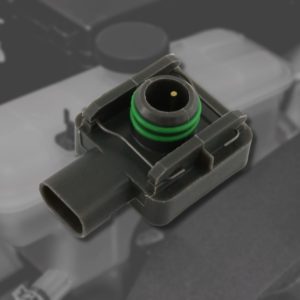To begin with, the coolant doesn’t typically leak from the top of your car because coolant is subject to gravity like everything else. Even if it’s leaking from a point near the top of the engine, it will still find its way to the ground. Finding the source of the leak is the first step in resolving the issue.
Caution: To avoid serious burns, never open the cooling system when it’s hot. Let it cool first.
Where Does Coolant Leak From?
Again, to fix a leak, you first have to find the leak. Let’s talk about that.
Hoses
There are hoses that carry coolant from the radiator to and from the engine and there are hoses that carry coolant to the heater core. Some engines have smaller coolant hoses leading to the throttle body to keep it from freezing and sticking open on long winter drives up north. Some will have coolant hoses leading other places, so be aware of everywhere coolant flows before you start. Hoses can be compromised by age, engine oil leaks, etc. Check the hoses carefully.
Worn Hose Connectors and Plastic Tees
There are many plastic fittings carrying hot coolant on newer vehicles and over time, plastic fails.

Clamps connect and secure coolant hoses to the radiator and the various engine components.

Damaged Heater Core
If you find coolant pooling on your floor mats, then it’s likely coming from the heater core. The heater core is typically located behind the dashboard, where it dissipates to keep the cabin warm. When it fails, coolant can leak and cause your cabin to smell like sweet fruit.
You may see coolant dripping out of the evaporator drain if the heater core is leaking into the A/C plenum.
Radiator

How To Fix a Coolant Leak
Fixing a coolant leak can be hard or it can be easy, depending on what it is. Here are helpful tips on how to find and fix an engine coolant leak:
Follow Safety Protocols
Don’t forget to wear protective gloves and safety goggles to protect your eyes and skin from chemical exposure. Working in a well-lit area with proper ventilation is also a must.
Find the Source of the Leak
Tracking down the coolant leak is the first step to fixing it.
If you’re having trouble finding it, you can try using a pressure tester.
Let the Engine Cool Down
Working on a hot engine means you’re more likely to get burnt by spilled coolant and hot metal parts. For your own safety, let your engine cool down for at least an hour before trying to replace the faulty component.
Replace the Damaged Part
Depending on where the coolant is leaking from, you might have to ask a mechanic for help.
However, if you’re confident in your skills, you can still try to do it yourself. Whether you’re replacing a radiator hose or clamp, just be sure to get a replacement that fits your vehicle’s year, make, and model.
Is It Safe To Drive With a Coolant Leak?
When you have a coolant leak, fix it or get it fixed. Don’t put it off or you could destroy the engine.
How Much Does a Coolant Leak Repair Cost?
The exact cost to fix an antifreeze leak will depend on several factors, such as your vehicle’s year, make, and model, and what part needs replacing. For example, radiator hoses can cost anywhere between $10 and $750, while hose clamps usually sell for $10 to $30. Keep in mind that these prices don’t include labor costs.
Any information provided on this Website is for informational purposes only and is not intended to replace consultation with a professional mechanic. The accuracy and timeliness of the information may change from the time of publication.
































